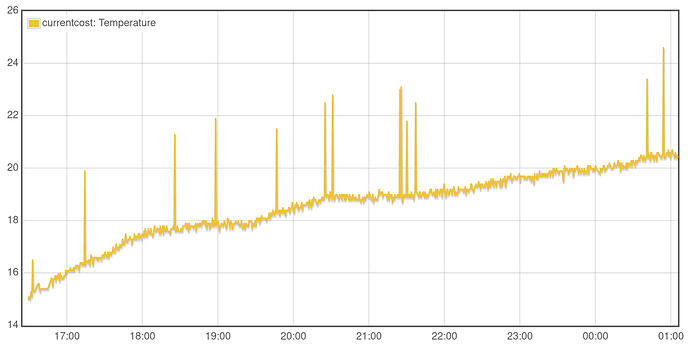Well here’s the worst it’s been since we got the heat pump @mjr. Something else keeps taking the power down and we ended up turning things off for hours on the 8th when it was already cold. We were actually unhappy for the first time.
This graph also shows how the temperature normally drops a degree or two each night when the heat pump is shut down.
I’ve zoomed in on the evening of the 8th after we got things running smoothly again.

